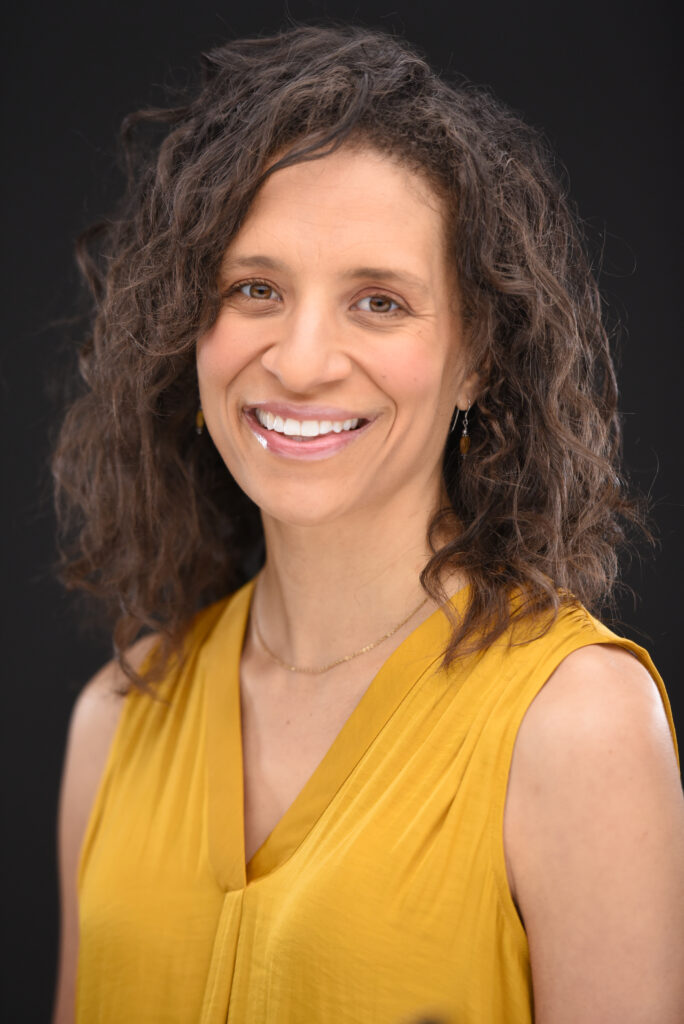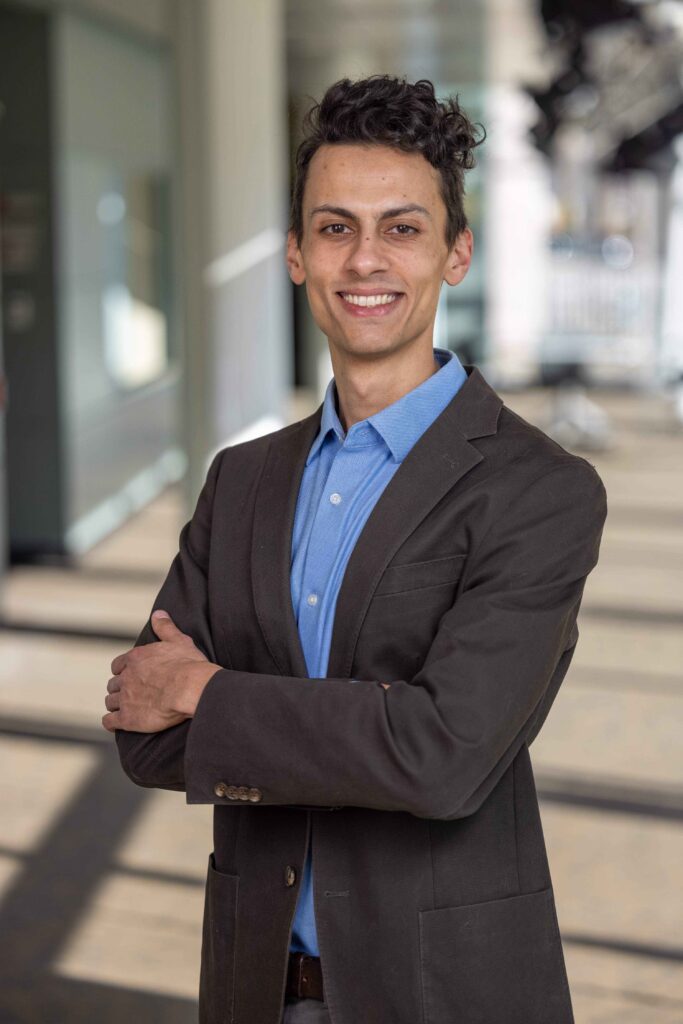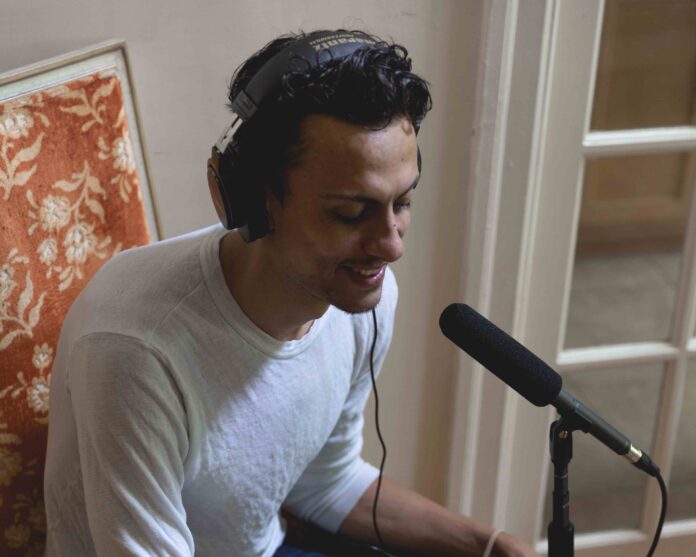Many queer people are, unfortunately, familiar with the idea of having to hide part of their identity in certain spaces. This may be especially true for people with intersecting marginalized identities, like Black, Brown and mixed race queer people. LGBTQ+ people are often forced to conform to a world that is based on revealing part but not all of themselves. In order to shed more light on the complexities of biraciality and multiraciality, journalist, actor and activist Daralyse Lyons and independent journalist, radio host and podcaster Malcolm Burnley, both of whom are biracial, will co-report and co-produce a new audio project called “On Being Biracial,” which will include queer voices.
Lyons and Burnley will interview around 30 people of all ages and backgrounds, some of whom they hope will be LGBTQ adults, to talk about their experiences as someone who identifies as biracial or multiracial, or who has multiracial ancestry. The roughly 10-episode series will include themes such as the one-drop rule as related to racial identity, “passing” and other aspects of biracial experiences.
They are currently putting out the call for interviewees and plan to conduct interviews over the winter months with the goal to release this summer. To produce “On Being Biracial,” the duo is collaborating with other media entities including Broke in Philly, Philadelphia Neighborhoods, Kouvenda Media, the National Association of Black Journalists and the radio station WURD.

“It’s always been a really beautiful part of my experience that I’ve been able to own and embrace all aspects of myself, at least insofar as it came to racial identity,” Lyons said. “The older I get and the more that I interact with other folks, especially doing diversity, equity and inclusion work, I realized that that has not always been the case. Not everyone is safe to embrace all of themselves, or a lot of people have their identities superimposed on them.”
Lyons and Burnley commented that many stories about biracial experiences are untold, exoticized or get buried in binary narratives.
“Stories of biraciality and multiraciality have been erased or pushed to the fringes historically,” Burnley said. “Or when they have been told, they’ve often been used as a political symbol, whether it’s for people who want to tout that integration was 100% successful, or on the other side, particularly historically, the stereotype of someone who’s mixed or multiracial has been really based on the tragic mulatto stereotype, which is that they don’t fit in, they are kind of tortured. Even 100 years ago, they were also considered sexually promiscuous or just people who didn’t fit in and could be problematic.”
Burnley added that narratives of biraciality have been used as symbols commonly by white majority groups for the purpose of promoting an agenda. “It’s really important to reclaim that because even if some of that symbolism isn’t as apparent in 2023, those stories still really resonate.”
Lyons and Burnley recently released a special three-episode version of the series called “On Being Biracial: Youth Voices,” which includes interviews with about 15 youth. They discuss how their biracial or multiethnic identities fit in with their social and cultural experiences, their sense of belonging as related to their racial identity, their perceived race and how that influences their own racial identity, and more.
Lyons fully embraced her biracial identity since her childhood and felt a sense of acceptance in Black and white spaces, she said. However, coming out as bisexual in her mid twenties proved more difficult because she felt pressure to choose a side.
“It was that rootedness in my experience of race that I was always taught that if society can’t meet you as you are, you are not the problem,” Lyons said. “It is a societal failure. I think having that knowledge helps me as a bisexual person to [think], what are the systemic societal problems? In my experience, the LGBT community is amazing, super loving, and super receptive, but also struggles to create space for bisexual folks in the same way that the non-queer community struggles. I think having that experience [as a bisexual person] helped me to see that other people have that parallel when it comes to race. I want people to feel like they can show up as authentic as they choose to be, and be met with acceptance, approval and celebration.”
That parallel, and other similarities between LGBTQ identities and multiracial identities is the reason that Lyons and Burnley plan to include queer voices in their podcast. Burnley, who identifies as straight, also sees overlap between LGBTQ identities and multiracial identities.

“More importantly, we want to find and explore how all identities are interrelated, especially queer individuals,” he said. “It’s usually important that in talking about racial identities, we’re not minimizing [people’s] sexual orientation. We’re also going to be looking at, to a lesser degree, religious identity, and other forms of that. In looking at one, [we don’t want to] overlook or deny the rest.”
Burnley added that he believes that there is something to be learned from the LGBTQ movement insofar as it’s composed of a body of people that fosters a sense of community, but that still has the ability to grow and evolve.
“The idea of the multiracial group being, on its own, a community, is something that’s pretty nascent, but I think there’s a lot to learn from how the LGBTQ movement has been able to grow and not stay stagnant,” Burnley said.
One of the main ideas that Lyons and Burnley want non-multiracial audiences to take away from the podcast is that there is no one unified experience of being multiracial, that those identities can be complex. Every story is different.
“I hope that they gain an understanding of the nuanced and spectrum nature of race,” Lyons said. “I hope that it really shakes up their internal Etch A Sketch and allows them to be better allies, and to support the people in their life and in their network in being who they know themselves to be, rather than how the non-multiracial listener might be tempted to categorize.”
Another intended takeaway is that non-multiracial listeners will understand that biracial experiences are not simply based on the combination of one racial ancestry and another, that they are often more complex than that.
“The experience of being multiracial is extremely layered,” Burnley said. “Particularly for people who have to navigate spaces where there isn’t a ton of racial consciousness, and for those multiracial individuals it may be assumed that their experience is just like any other. I think for multiracial folks, really understanding that there’s a lot of people out there who also think really deeply about what this means. And to really start defining what this demographic truly is.”
Lyons hopes that multiracial listeners “take away empowerment, to be able to really embrace who they know themselves to be. And not to allow anyone else to dictate that.”Those who are interested in being interviewed as part of “On Being Biracial” are asked to take a survey at https://www.onbeingbiracial.com/contact/.
